I’m not going to lie to you (and why would I?). Despite being an ardent fan of the superhero genre where characters fly, stick to walls, fire optic blasts from their eyes and countless other things that normal human beings can’t do, some of my all-time favorite Spider-Man stories are of the quieter variety. You probably came to that conclusion after I heaped lavish praise on the first half of David Morrell and Klaus Janson’s “Spider-Man: Frost” story despite it featuring no fighting and only about a half-dozen pages of Spidey in costume (if even that many). It’s not that I don’t like to see things blow up and for heroes to successfully (and physically) subdue villains, but I think the degree of difficulty is quite high when a comic book writer doesn’t have those tried and true crutches to lean on, and is instead forced to focus on nuance and characterization. So, when a story with little to no action sequences comes along and successfully engages me, my level of adoration and admiration is ratcheted that much higher.
J. Michael Straczynski and John Romita Jr.’s “The Conversation,” aka, Amazing Spider-Man #38 (vol. 2), may be the quintessential “quiet” Spider-Man comic, and warrants discussion about its place in the pantheon of some of the all-time great Spidey stories. It’s a story that both eloquently and humorously addresses an age-old “what if” for Spider-Man fans: what would happen if Aunt May were to ever discover Peter was actually Spider-Man (ignoring the fact that the “fake” Aunt May “knew all along” when she was on her death bed in ASM #400). It’s arguably JMS’s crowning achievement during his commercially successful/critically inconsistent run on ASM. And any criticisms I have about the issue, are really just me picking nits for the sake of it.
As I mentioned in my recent write-up about ASM #50 (vol. 2), JMS and JRJR did their best work on these more intimate stories. Beyond its riveting premise – Stan Lee and his successors had trained readers for years to think that May finding out about Peter and Spider-Man would KILL her – what makes ASM #38 such a landmark issue is the way JMS cuts through the utterly trite and clichéd way the Peter/Aunt May dynamic had been written for years, and breathes new life into the relationship in such a dynamic way. The interplay of Straczynski’s dialogue and JRJR’s images give the comic an almost cinematic feel (considering JMS’s Babylon 5 pedigree, this makes total sense). There’s a give and take between Peter and May in this issue that makes these two come across as real people, not phony comic book people who are only acting and reacting because it serves the story a certain way.
Despite never being (permanently) killed off, May has long been the living embodiment of the “women in refrigerators” trope, which argues that most female characters in the comic book universe are treated as dispensable figures who only exist to advance the stories of all the male characters. Outside of one wonderfully written moment in the Lee/Steve Ditko years, May’s primary role during the Silver Age era was to be an albatross for Peter – she’d usually get sick and force Peter into action at risk of her dying or finding out his secret identity. Even the Ditko/Lee era’s most famous story was all built on the foundation on May getting sick and needing a serum to save her life. Sure, that story works marvelously becomes it echoes the “with great power must also come great responsibility” mantra and ASM #33 may be the most well-plotted comic book in the history of the superhero medium, but it also further advances this idea that May is a weak, helpless figure that only adds guilt to Peter’s life.
In “The Conversation” May is assertive. She continually admonishes Peter “no more lies,” but does so in a way that’s sympathetic and invites dialogue from her nephew. Despite the shock of her discovery, May is able to keep it together and talk with Peter about being Spider-Man. One of my favorite parts of this story is when May tells her nephew that she could never endorse his decision to day-after-day, put his life on the line as Spider-Man, but she would never try and convince him to stop. That’s such a telling character moment for someone who has had so little characterization in the 40 years that preceded this issue.
I hope every child can identify with that moment when you make a decision that you know your parents/guardians don’t like, but they accept it and love you for it anyway. It’s one of the few sure signs of growing into an adult. I know when it happened to me for the first time, it felt like a release, and while my parents may still occasionally try to guilt me about stuff in my life (a lot of it is connected to seeing them more with their grandchild in tow), there’s also a mutual respect about the decisions I need to make for the good of myself and my family.
Once May understand why Peter is Spider-Man, and the obligation he feels to right the wrong that led to Uncle Ben’s death, she knows better than to argue with him. But I still find it admirable that the conversation continues (including a 2 hour and nearly 40 minute break where Peter goes over his entire origin). May’s level-headedness also creates an entire new status quo for the Spider-Man universe, where she finally knows his secret and her knowledge actually adds to the drama of these future stories (such as “Civil War” and “The Other”). The fact that she no longer has this information is perhaps the greatest tragedy of “One More Day,” moreso than the dissolution of Peter and Mary Jane’s marriage.
JMS does work in a retcon of his own in this issue which I imagine some people can take or leave. While Peter has been blaming himself for all these years for Uncle Ben’s death, we learn that May also finds herself responsible. On the same night that he was shot, May and Ben had an argument and he went to “take a walk” outside to cool off. While he was outside, he was shot. This seems to fly in the face of what we know from Amazing Fantasy #15, and later ASM #200, but I understand this was something JMS wanted to do to put Peter and May on equal footing. And to be honest, I think introducing this information makes the story in this comic better, as it adds a tragic and sympathetic element to both characters, rather than putting the onus squarely on Peter to have to admit to his Aunt his life’s great mistake.
The story also doesn’t play May for a fool, which is refreshing. She’s long known that Peter has had some secret – how could someone who lived with him for so long not realize this? In a bit of humor, May tells Peter that she thought the secret he was hiding was that he was gay (which explains his aloofness and sensitive nature). Despite not knowing exactly what secret was hiding, giving May some perceptiveness helps to keep the conversation between she and Peter from flying into melodramatic soap opera territory.
The only shot of Spider-Man in costume comes on the comic’s very last page. It’s a beautiful image of Spidey swinging off, this tremendous weight finally lifted off this shoulders.
Despite it only getting an “honorable mention” from me in my “Top 10” ASM issue list earlier this year, “The Conversation” is one of those comics I would recommend to anyone who is looking to read a sampling of Spider-Man stories in order to get a sense of what the character and his universe is all about. Additionally, with so much focus on Aunt May between her role in Superior Spider-Man and “Frost,” it’s great to think back on “The Conversation” as the standard bearer for all May/Peter stories.
All images from Amazing Spider-Man #38 (vol. 2): J. Michael Straczynski, John Romita Jr., Scott Hanna & Dan Kemp

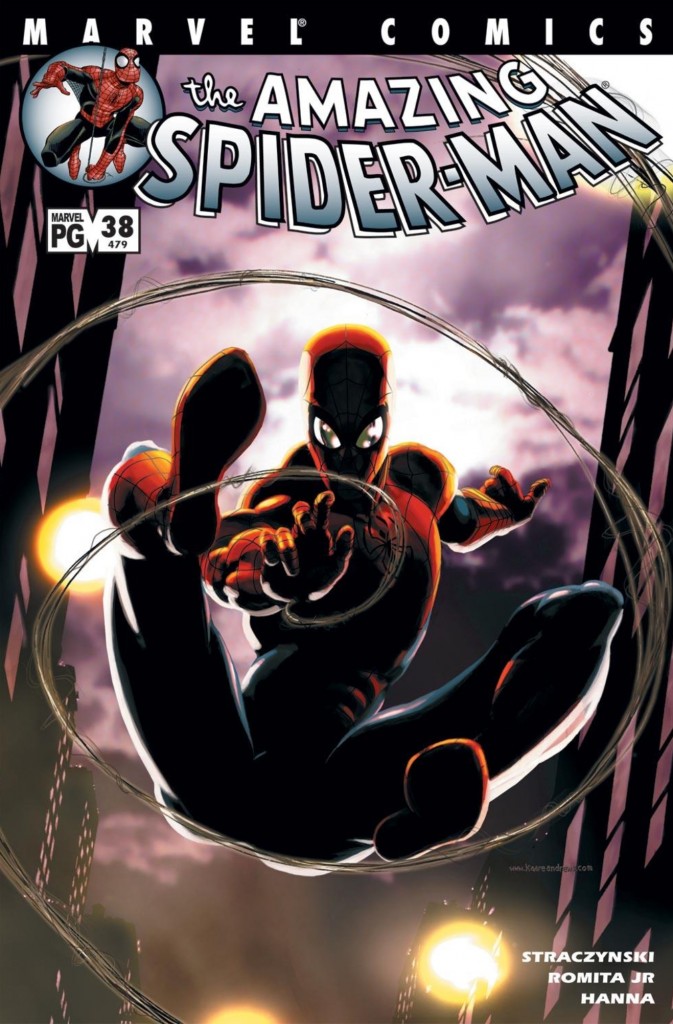
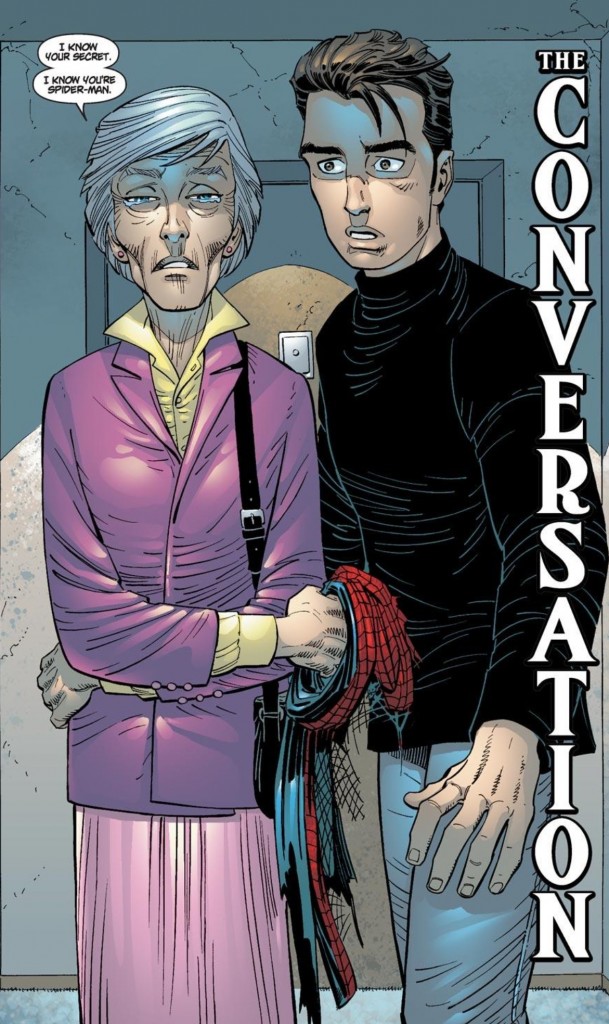
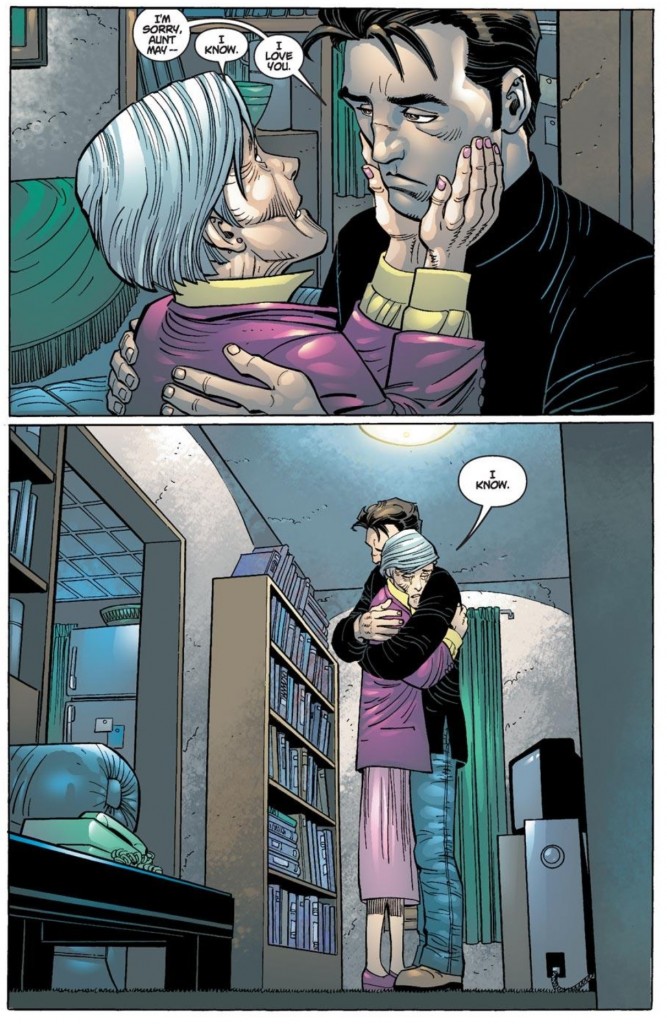
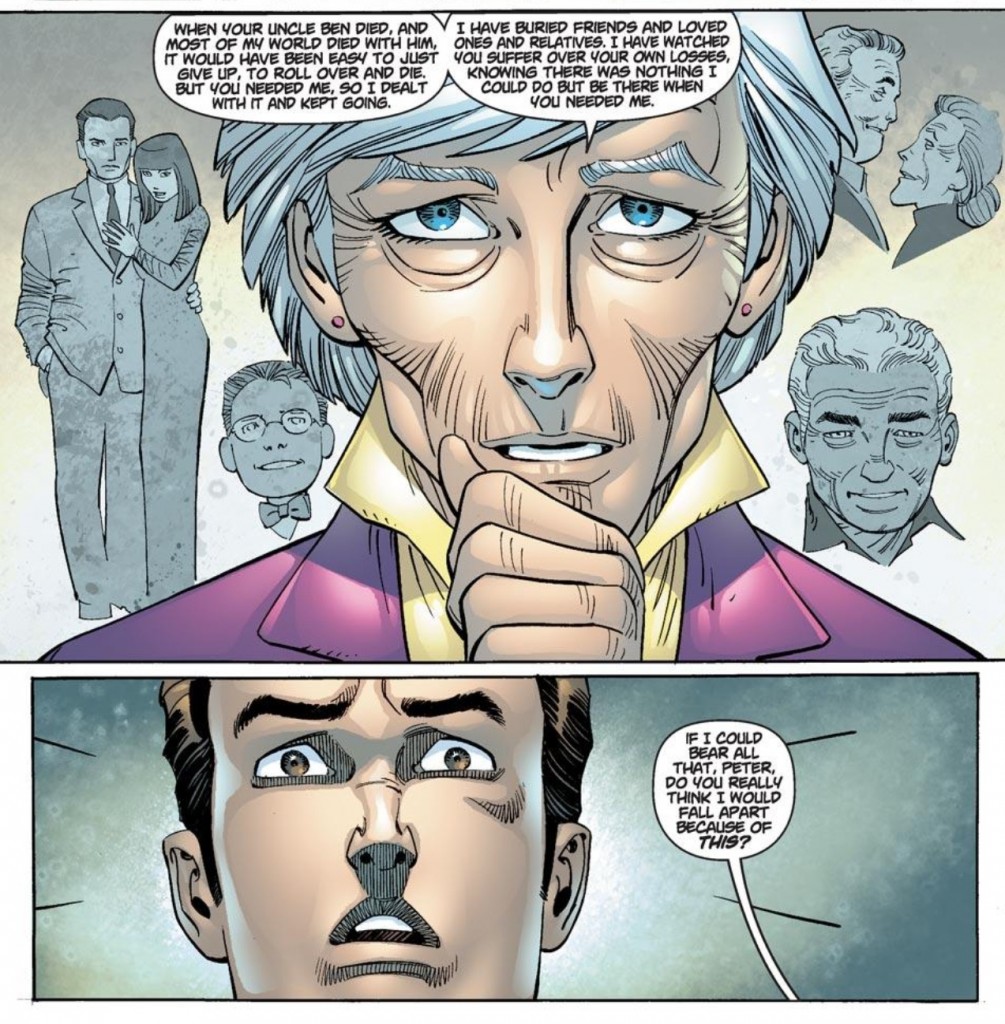
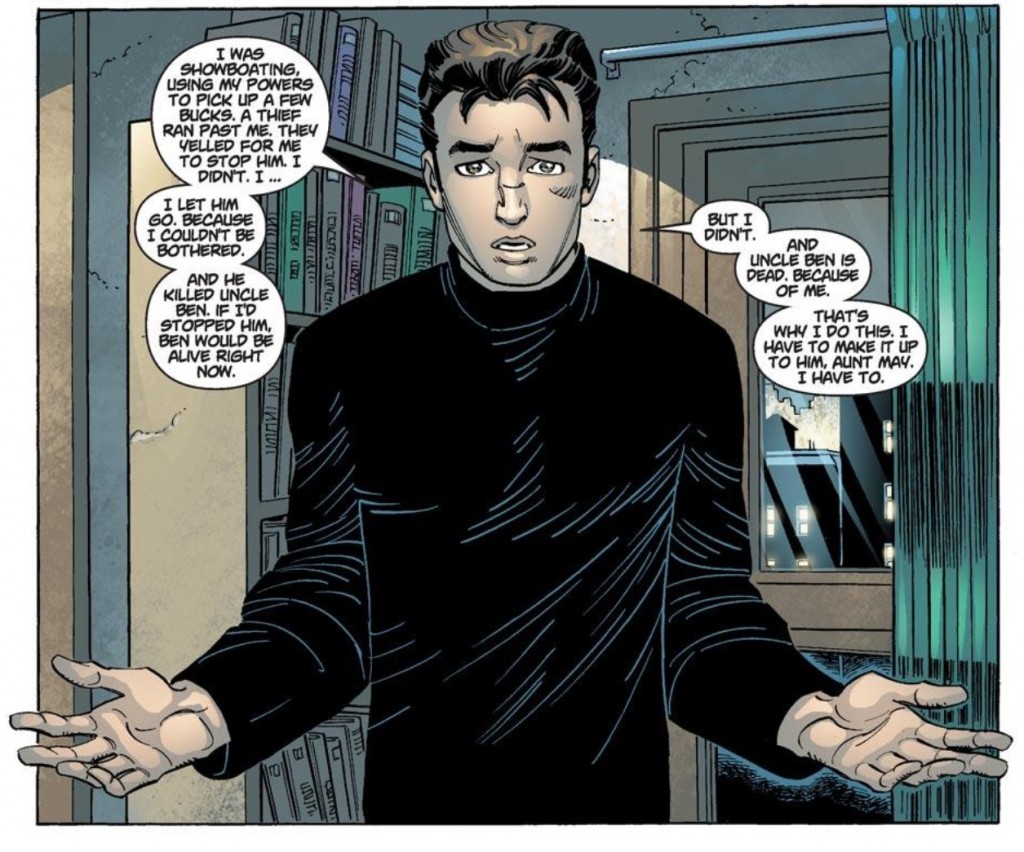
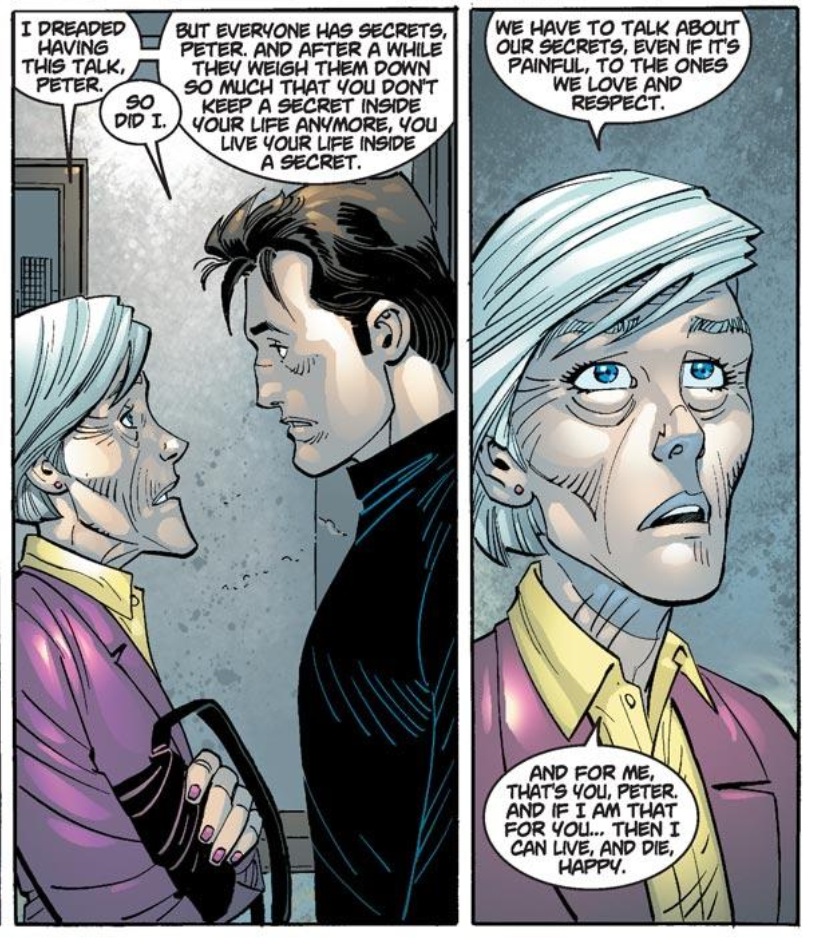
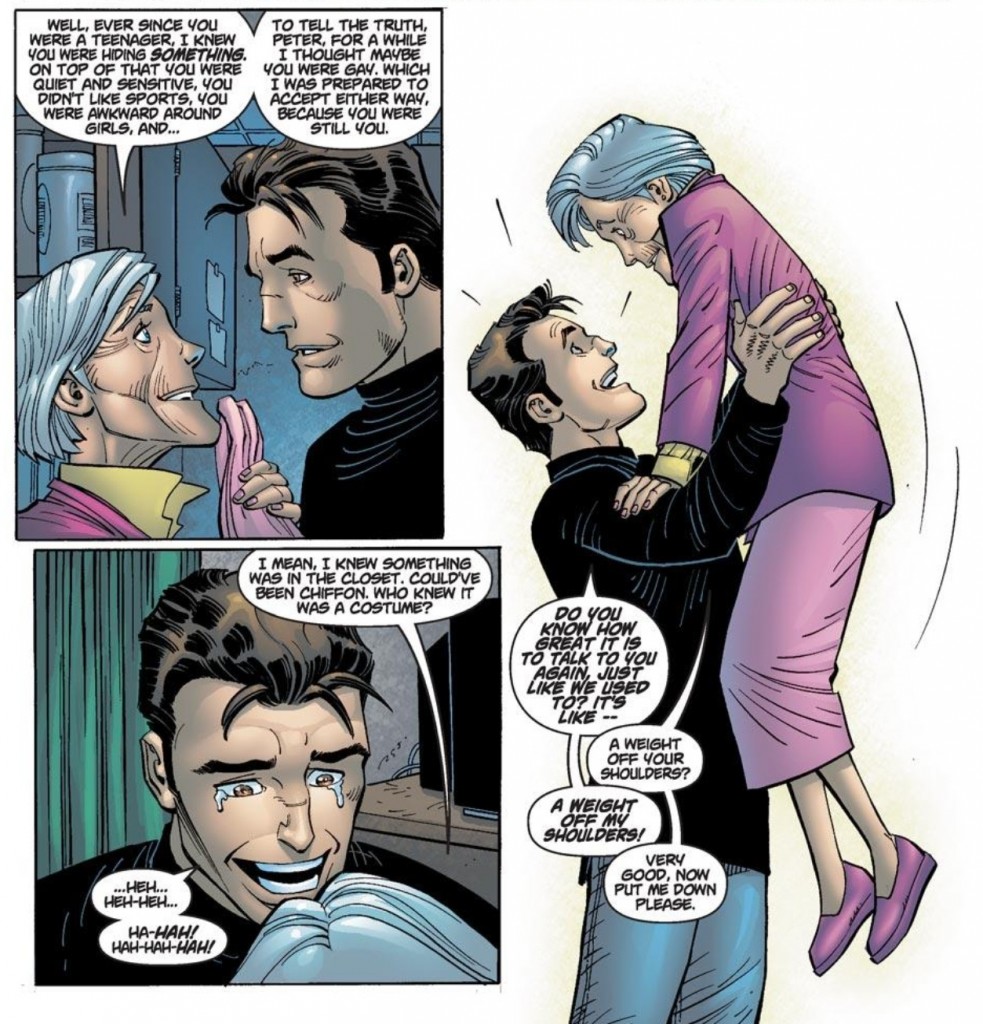
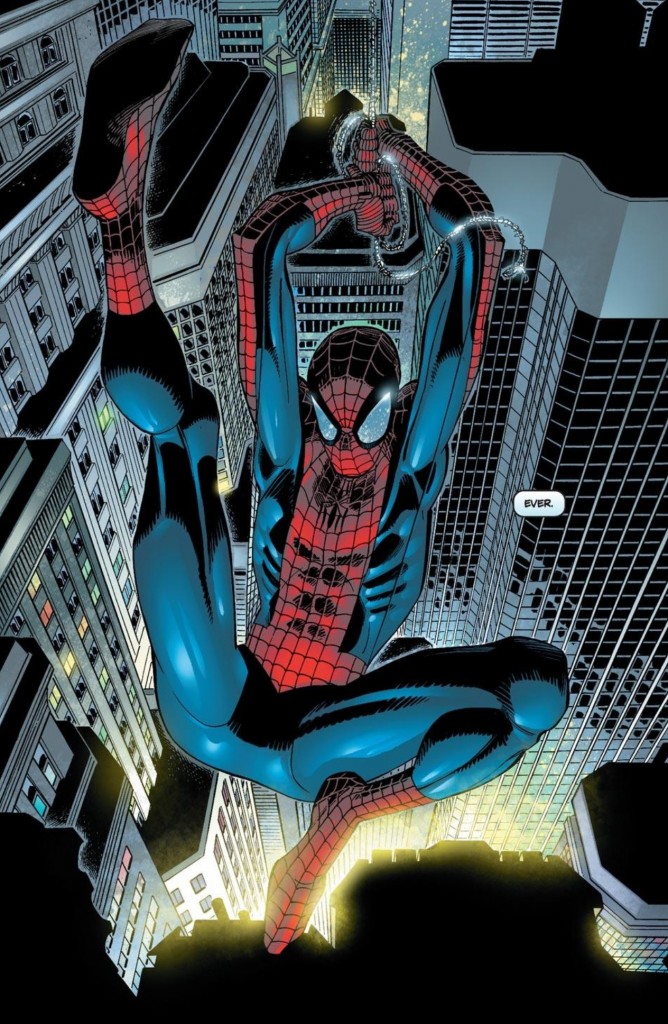


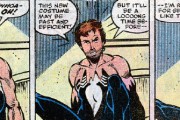
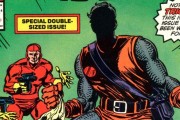
I’ve got a feeling that what happened in the Parker house that night may be the single most retconned part of the origin, not least because the original version never showed it. Amazing #1 & #200 have Ben shot in the living room with May watching, and a few other issues have repeated this. What If? 46 has (in the regular continuity) May asleep in bed while Ben is kept awake by backpain and goes to investigate a noise downstairs. Here we have an argument and Ben walking out into the street. And I forget if some of the various retellings over the years have pitched in on this.
I love this issue. When Brand New Day wiped everybody’s memory of Peter being Spider-Man, I thought that it was a shame that they didn’t allow May to remember. It more or kess invalidates this issue and what is worse, it makes Peter look like a really terrible person for lying to May again since he knows that this conversation happened.
Issues like this are why I’m so bi-polar in regards to JMS’s run. On the one hand, most of his inter-personal writing between Pete, MJ and May was excellent, as they dealt less with the threat of supervillains and more with the threat of relationships deteriorating for the reasons relationships deteriorate in real life. Wonderful stuff.
On the other hand, most of the events that happened while Pete was in-costume were either dull, derivative, or actively terrible. (And I’m even willing to take “Civil War” off the table in discussing his work, even though it sucks pretty hard core as well.) JMS just seems to go to extremes as far as my tastes go.